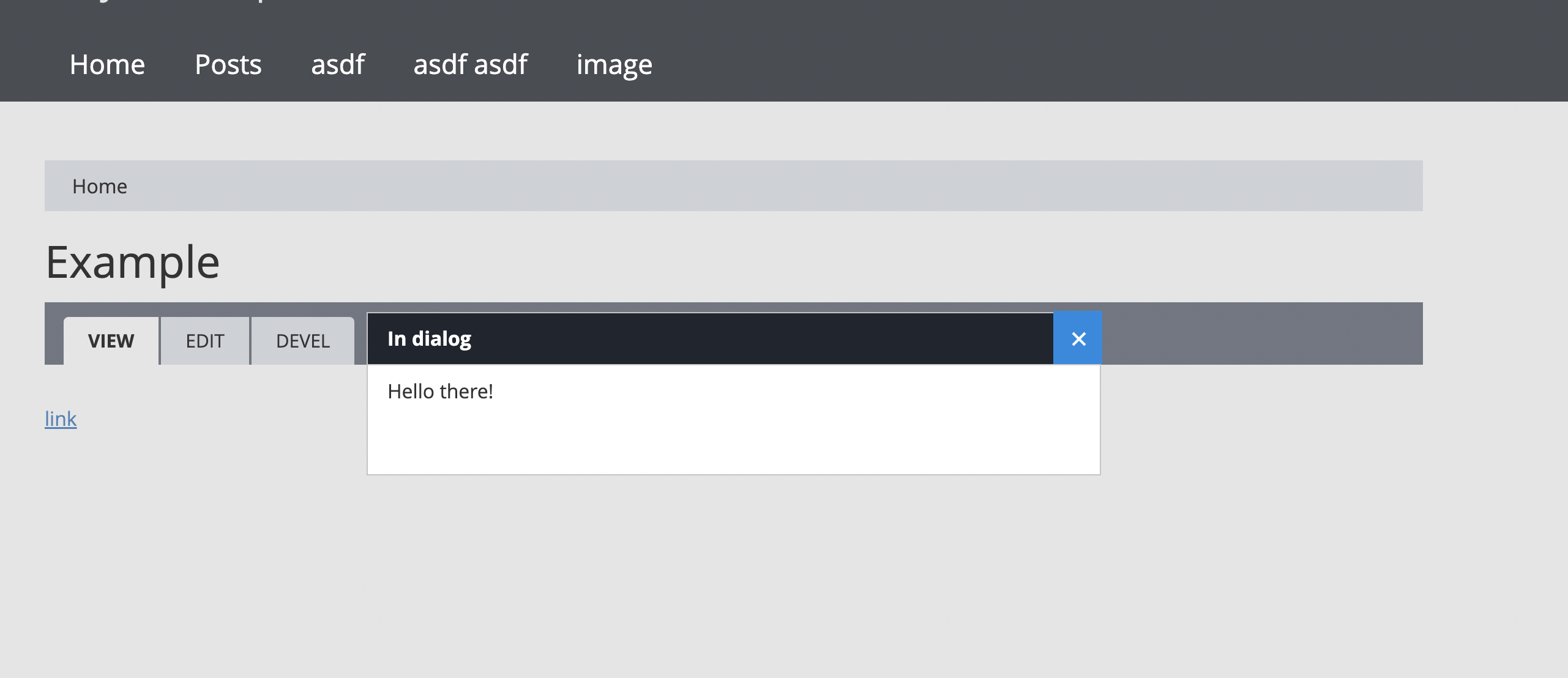Followup question on modal dialogs. When I inspect the element, the styling appears to be set directly in the HTML. Is there a way to change the width of the popup from 100% for example?
<div tabindex="-1" role="dialog" style="position: fixed; height: auto; width: 100%; top: 253.014px; left: 0px; display: block;" class="ui-dialog ui-corner-all ui-widget ui-widget-content ui-front ui-dialog-buttons" aria-describedby="backdrop-modal" aria-labelledby="ui-id-1"> ... </div>
Thanks.



I see. The solution then is to assign a css class that provides max-width to override the inline width, as follows:
Link:
<a href="/in-dialog" class="use-ajax" data-dialog="true" data-dialog-options="{"dialogClass":"test-dialog"}">link</a>CSS:
@media (min-width:600px) { .test-dialog { max-width: 600px; } }Result on a computer screen (600px):
Result on a small device screen (takes 100%):